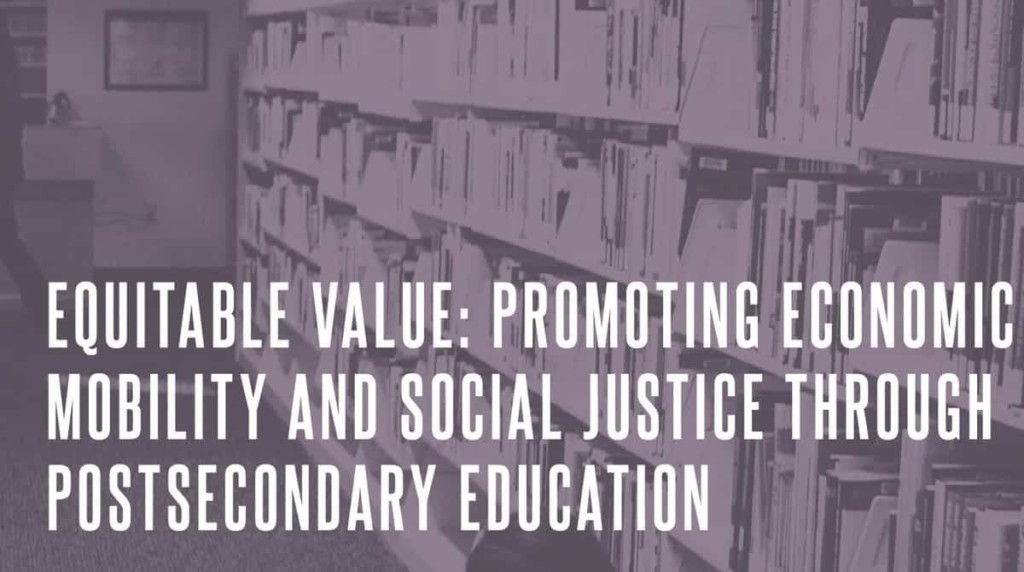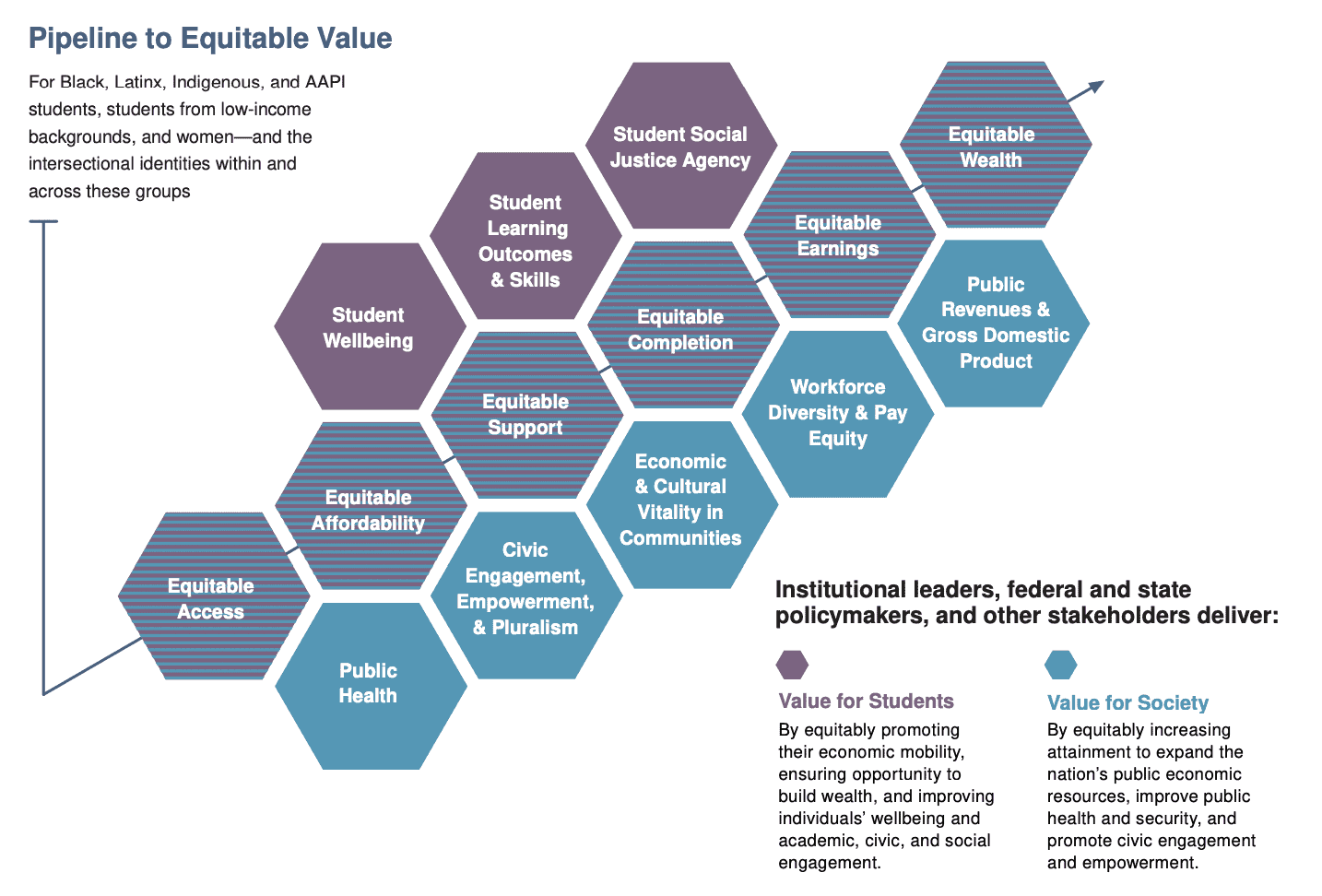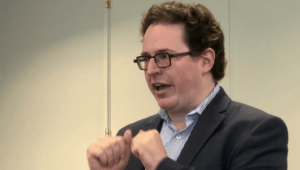Rating the Value of Higher Education

“Higher education is a racket that sells you a very expensive ticket to the upper-middle class,” said Bill Mahr. The comedian put a fine point on America’s growing frustration with steady price increases and the perception of a declining return on investment from postsecondary studies.
Exacerbating the frustration has been the gradual increase in degree requirements for jobs that don’t really need them. And as degrees became more expensive and widely sought, they became a weaker proxy for a bundle of skills.
“Higher education is not worth the cost to students anymore.” Nearly two-thirds of respondents to a New America survey agreed with this statement, up from just under half in the first such survey last August. Survey respondents think they are paying too much–even the ones that find value in higher education.
In a recent podcast series, author Malcolm Gladwell noted that college ranking systems like US News & World Report contributed to this problem by sorting on privilege–endowment, selectivity, and spending. Rankings punish schools like Dillard that enroll a high percentage of low-income Black students and keep tuition low.
A New Way to Think About Value
There is a new way to think about the contribution of higher education–both for individuals and communities. The Postsecondary Value Commission, sponsored by the Bill & Melinda Gates Foundation, issued a report in May offering a new way to describe the value of higher education, particularly for underrepresented groups. The framework gauges how specific institutions and programs create value for students and ensure equitable completion and post-college outcomes.

Rather than rewarding privilege, the new framework encourages a more equitable higher education system and just society by:
- Equalizing access to increase postsecondary value,
- Removing affordability as an impediment,
- Eliminating completion gaps and strengthening post-college outcomes,
- Exposing sources of inequity, and
- Promoting equitable postsecondary value.
The Institute for Higher Education Policy (IHEP) is developing measures and crunching the data associated with the new framework and could issue a new sort of ranking system that better reflects value contributions by postsecondary institutions.
The agenda also includes critical questions which students and families should expect institutions to answer as they determine which institutions and programs can provide them with the most value. A new ranking system from IHEP would help high school students make more informed decisions about college attendance.
The Higher Ed Value Agenda
The Value Commission report encourages policymakers to boost need-based aid. It encourages higher ed leaders to create clear paths to certificates and degrees connected to family-wage employment including improved academic mapping and advising, more targeted financial and academic support, and better use of data to identify disparities in serving students.
The report suggests learners need to be “empowered to ask fair questions about the costs and benefits of institutions and programs.” That may be aided by better consumer information from IHEP that displaces privilege-based ratings in high school guidance.
While the report states that “Institutions that keep prices low for students can deliver exceptional economic value,” it is largely silent on the cost control and affordability agenda (other than calls for more aid).
The report made three academic recommendations to build value:
- Pathways: create pathways to degree completion and careers. When combined with early warning systems and strong supports, pathways and cohort groups could lead to stronger completion rates.
- Skills: embed experiences that develop core employer-demanded skills into pathways. When core skills are assessed, credentialed, and incorporated into a portable digital record, they support the growing trend of skills-based hiring.
- Work-based learning: offer meaningful in-school employment opportunities, and develop paid internship opportunities and apprenticeship programs that build students’ skills, social capital, and networks.
To regain trust and bolster return on investment, many colleges and degree programs need an aggressive innovation and cost control agenda building on some of the pandemic agility developed over the last 18 months.
A new rating system would help communicate value in new and better ways and would remove the perverse incentives of current rankings.
Learner Advice
The commission report offers a new way to calculate the value of college that will provide much-improved insights to college aspirants in the coming decade. However, the increased cost of college, a rapidly shifting employment landscape, and new affordable alternatives suggest an emerging set of rules for postsecondary planning:
- Free: get all the free learning you can–and try to get credit and/or credentials for it. Focus on skill-building and communicating your capabilities.
- Fit: pick a college or training program with strong completion and employment rates. Program quality and fit are more important than selectivity.
- Limit Debt: If you don’t get a full scholarship, be cautious about taking on college debt–attend affordable institutions and work while you learn. Consider free (or debt-free) training programs with high placement rates in high wage/high demand jobs.
Value is the new watchword for postsecondary learning–and that’s much more about delivering quality and affordability than a ranking based on privilege.
For more, see:
- The Opportunity for Personalized and Local Guidance
- Invention Opportunity: Creating a Shared Reality
Stay in-the-know with innovations in learning by signing up for the weekly Smart Update.
This post was originally published on Forbes.






Kassahun Endeshaw
Dear Tom,
Thanks for sharing your a well-thought insight on this very crucial subject that has been affecting many households in the U.S. The statement that two-thords of respondents belive “Higher education is not worth the cost to students anymore.” is scarely truth. There are also many students coming out that corroborates this statement. I don't know what incentives would push students if the return for higher education is significantly higher than high school graduates. This is I think something that policy makes should start thinking seriously. Off shoring of business and/or skilled immigrants might have hidden the problem hitherto, but I feel that it's going to e difficult for the future with this development. As an immigrant I feel that fixing the American education policy is not easy thing to do given the politics embedded it in.
Thank you also for the three advises of: Free, Fit and Limit debt. I have small question to you regarding the sky rocketing prices of education which outweight the value most of the times. Do you think the new development of migrating in mass education through online courses would be one solution? It is not uncommon to get an online degree from one of the prestigious college with relatively lower costs vis-a-vis the in-person program. Don't you think this revolution/evilution would change the landscape sometime soon?
Thanks,
Kassahun
Nadia Rolle
This was a great read! The point that hit home for me was the frustration created when jobs are posted as requiring a degree when it does not necessarily need one. Sometimes I feel this is intentional in order to only offer the position to a certain group of individuals. Unfortunately, this type of 'discrimination' does exist in the corporate realm. I have seen it backfire as well. I have interviewed and worked with persons with immaculate resumes and educational backgrounds (including multiple degrees) but were not able to complete the basic tasks required for the job because of their lack of skillsets. This is also why I agree with the increase in accessibility to postsecondary education including some form of training in skills specific to their career choice. As you mentioned in the article, relevant internships and similar opportunities where they can gain valuable experience to complement their degree/certificate adds value to their marketability and can help make that expensive piece of paper worth it.